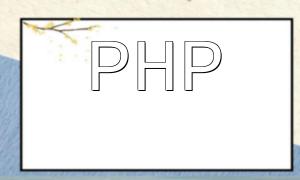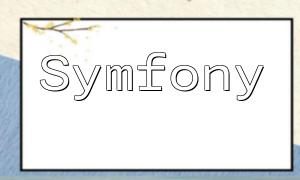PHP Slack Notification System: A Complete Guide to Real-Time Alerts and Notifications
Introduction
In today’s fast-paced work environment, effective team collaboration and timely communication are essential. Slack, a widely-used team communication tool, offers a convenient and efficient platform for team members to connect. This article walks you through developing a Slack notification system with PHP, enabling you to implement real-time alerts and notifications.
Step 1: Create a Slack App
First, you need to create a new app on the Slack Developer Platform. After logging in, click “Create an App,” provide an app name, and select the workspace. Once created, make sure to note the “Client ID” and “Client Secret,” as these credentials are essential for authentication.
Step 2: Install Dependencies
To facilitate interaction with the Slack API, we recommend using the Guzzle HTTP client. Install it via Composer by running the following command in your project directory:
composer require guzzlehttp/guzzle
Step 3: Configure OAuth2 Credentials
Within your Slack app settings, go to “OAuth & Permissions” and add a Redirect URL to receive authentication credentials. Also, add the necessary scopes based on your app’s permissions and save the changes.
Step 4: Implement the OAuth2 Authentication Flow
With OAuth2, users authorize access, allowing your app to interact with the Slack API. Here is a simple PHP example to handle the authentication process:
<?php
session_start();
$clientId = "YOUR_CLIENT_ID";
$clientSecret = "YOUR_CLIENT_SECRET";
$redirectUri = "YOUR_REDIRECT_URI";
if (!isset($_GET['code'])) {
// Redirect user to Slack authorization page
$authUrl = "https://slack.com/oauth/authorize?client_id={$clientId}&redirect_uri={$redirectUri}&scope=channels:read";
header("Location: {$authUrl}");
die();
} else {
// Retrieve the code returned by Slack
$code = $_GET['code'];
// Exchange the code for an access token
$tokenUrl = "https://slack.com/api/oauth.access?client_id={$clientId}&client_secret={$clientSecret}&code={$code}";
$response = file_get_contents($tokenUrl);
$data = json_decode($response);
// Store the access token for later use
$_SESSION['token'] = $data->access_token;
// Authentication successful, redirect to the app homepage
header("Location: /app");
die();
}
?>
Step 5: Send Notification Messages
After authentication, you can send messages through the Slack API. Below is an example using Guzzle to post a notification:
<?php
session_start();
$token = $_SESSION['token'];
$channel = "YOUR_CHANNEL";
$message = "Hello, Slack!";
// Send POST request with Guzzle
$client = new GuzzleHttp\Client();
$response = $client->post("https://slack.com/api/chat.postMessage", [
"headers" => [
"Authorization" => "Bearer {$token}",
"Content-Type" => "application/json"
],
"json" => [
"channel" => $channel,
"text" => $message
]
]);
// Handle the response
$result = json_decode($response->getBody());
if ($result->ok) {
echo "Message sent successfully!";
} else {
echo "Failed to send message: " . $result->error;
}
?>
Conclusion
Following these steps, you can build a basic PHP Slack notification system that delivers real-time alerts. Future improvements might include enhanced error handling and additional features to increase robustness and usability. We hope this tutorial helps you master PHP and Slack integration smoothly.









